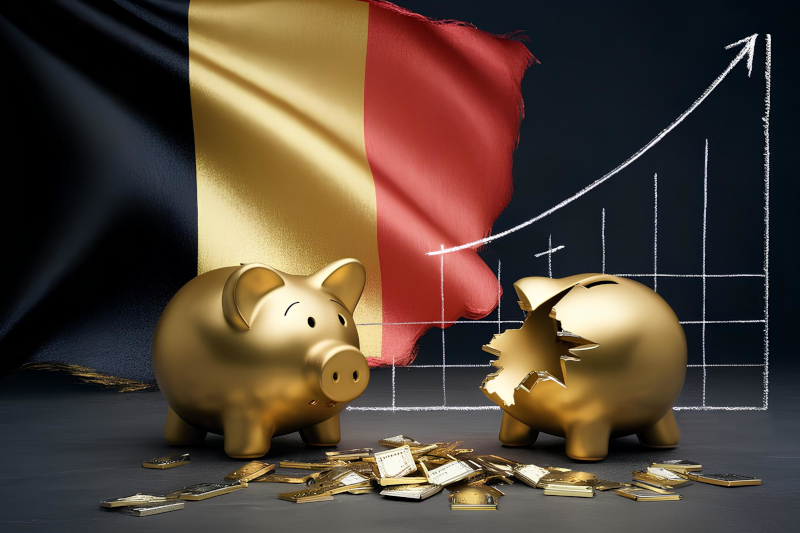
Understanding the ECB’s HICP Inflation Measure
Understanding the ECB’s HICP Inflation Measure
Why This Crucial Metric Should Shape Your Financial Planning
Inflation is a term that resonates deeply with consumers, businesses, and policymakers alike. It influences purchasing power, investment decisions and overall economic stability. The European Central Bank (ECB) plays a pivotal role in managing inflation within the eurozone, primarily through its monetary policy tools and inflation measures. One such measure is the Harmonised Index of Consumer Prices (HICP), which has sparked debates about its accuracy and relevance in reflecting the real impact of inflation on consumers.
The ECB’s Recent Decision and Inflation Outlook
On March 6th, 2025, the ECB announced a reduction in its three key interest rates by 25 basis points. This decision, particularly the lowering of the deposit facility rate, was driven by an updated assessment of inflation dynamics and the effectiveness of monetary policy transmission. According to the ECB, the disinflation process is progressing as expected, with headline inflation projected to average 2.3% in 2025, 1.9% in 2026, and 2.0% in 2027.
While these projections align with the ECB’s mandate to maintain inflation around or below 2%, the upward revision for 2025 reflects stronger energy price dynamics. However, the ECB’s focus on inflation excluding energy, food, alcohol, and tobacco—averaging 2.2% in 2025, 2.0% in 2026, and 1.9% in 2027—raises questions about the measure’s relevance to everyday consumers.
The HICP Index - A Harmonised Measure of Inflation
The HICP is designed to measure inflation across the eurozone using a harmonised methodology. It tracks the average change in prices for a basket of goods and services over time. While this approach ensures consistency and comparability across member states, it excludes certain volatile items such as energy, food, alcohol, and tobacco.
The rationale behind these exclusions is to provide a clearer picture of underlying inflation trends, which are less influenced by short-term price fluctuations. However, this methodology can lead to a distorted view of inflation’s real impact on consumers, as these excluded items often constitute a significant portion of household expenditures.
The Disconnect Between HICP and Consumer Reality
For many consumers, the HICP’s exclusion of essential items like energy and food creates a gap between reported inflation rates and perceived changes in purchasing power. Energy prices, for instance, have been highly volatile in recent years, driven by geopolitical tensions and supply chain disruptions. Similarly, food prices have surged due to factors such as climate change, transportation costs, and global demand. This disconnect becomes evident in everyday scenarios. Whether planning a holiday to the Middle East, visiting family in the US, or undertaking a home renovation, consumers often face higher costs than those reflected in the HICP. These real-world expenses highlight the limitations of the HICP in capturing the true impact of inflation on household budgets.
Implications for Financial Planning
Understanding the nuances of the HICP is crucial for effective financial planning. While the ECB’s inflation projections may suggest stability, consumers should consider the broader context of price changes, including those excluded from the HICP. Here are some key considerations:
- Budgeting for Essentials - Energy and food are fundamental expenses that can significantly impact household budgets. Consumers should account for potential price fluctuations in these categories when planning their finances.
- Investment Strategies - Inflation affects the real returns on investments. By considering both headline inflation and the excluded categories, investors can make informed decisions about asset allocation and risk management.
- Long-Term Planning - For major expenses like travel or home renovations, it’s essential to factor in potential cost increases due to inflation. This proactive approach can help mitigate financial stress and ensure smoother execution of plans.
- Personal Inflation Rates - The ECB acknowledges that personal inflation rates can vary based on individual consumption habits. Consumers can calculate their own inflation rates to better understand how price changes affect their specific circumstances.
Smart Investment Strategies for Navigating High Inflation and Low Interest Rates
At Monnet Capital, we understand the challenges that inflation and persistently low interest rates pose to your financial well-being. We also recognize the need for viable investment strategies that not only protect your capital but also harness opportunities, such as the anticipated rise in EU defense spending in the coming years. Whether you seek secure investments with capital guarantees or dynamic strategies to outpace inflation, we offer tailored solutions designed to align with your financial goals.


